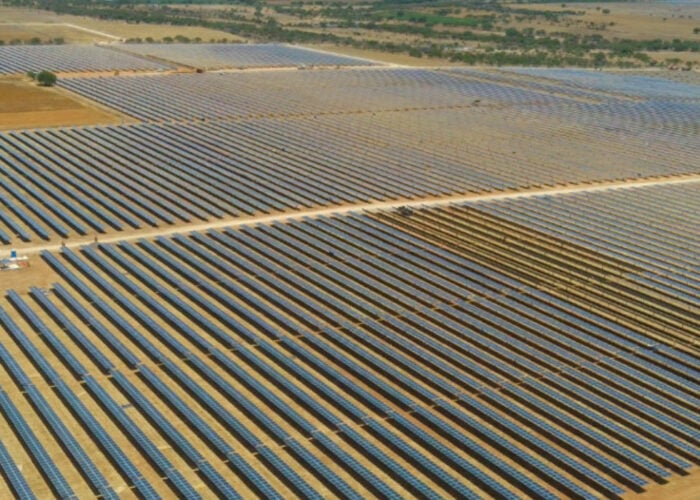
Although residential solar in the US has lost its main tax credit, there is still hope that its popularity and fundamental economics, helped by a concerted effort at city and state levels, could yet win the day. Ben Willis reports.
The loss of the 30% investment tax credit hitherto available for residential PV installations in the US is a further blow to a segment that was already struggling. Changes to net metering rules in America’s rooftop solar powerhouse, California, created a chilling effect that had begun to spread and led to a 31% decline in the market in 2024, according to analysts Wood Mackenzie.
Try Premium for just $1
- Full premium access for the first month at only $1
- Converts to an annual rate after 30 days unless cancelled
- Cancel anytime during the trial period
Premium Benefits
- Expert industry analysis and interviews
- Digital access to PV Tech Power journal
- Exclusive event discounts
Or get the full Premium subscription right away
Or continue reading this article for free
According to Sachu Constantine, executive director of lobby group Vote Solar, the loss of the ITC is therefore a “big deal” for the sector, on top of the other policy and financing challenges it was already facing. But for Constantine and other rooftop solar advocates, the end of the ITC does not spell the end of the rooftop solar market in the US. Far from it.
What the legislative disruption instigated by the passing of the so-called ‘One, Big, Beautiful Bill’ does not change is the fundamental value of solar, Constantine says: “What we know is that solar, especially rooftop solar, as a part of the portfolio, makes the overall grid more affordable. It increases resilience and reliability, and it adds affordability.”
These attributes provide the bedrock of the case that Vote Solar and others are now making on a state-by-state basis, where many of the key decisions on energy issues are taken. “States have a lot of influence,” Constantine says. “State regulators and the utilities themselves in their service territory have the ability to still streamline solar and solar choice. They can make it part of their portfolio. They can reduce the interconnection and permitting costs and delays, and they can provide fair compensation. And you know, from our point of view, they have every motivation to do that, regardless of the headwinds.”
With that in mind, Vote Solar is therefore targeting these actors as it seeks to keep the pressure up in the wake of government policy reversals. The organisation has campaigns running in several states across the US seeking to influence policymakers, legislators, regulators and others to ensure solar remains top of the agenda during this time of federal pushback.
This will not be easy. For example, Vote Solar has been actively engaged in trying to change the balance between fossil fuel and renewables in the integrated resource plan for the state of Georgia, recently signed off by the regulator, the Georgia Public Services Commission. In the event, in mid-July, the decision went the way of the utility, Georgia Power, and its desire to increase fossil fuel capacity to meet growing demand from data centres. But it will be future battles like these that Vote Solar will be seeking to influence in favour of solar. As Constantine points out, there is some 150GW of PV that could be connected in short order; with load growth ballooning and gas or coal generation in no place to take up the slack in the requisite time frame, the case for solar and storage will be hard to ignore.
“We’re going to put pressure on governors, legislatures and regulators to understand that jobs are on the line, that affordability and resilience and reliability are on the line, and that solar is the practical common solution to all of these things,” he says.
Driving down costs
A few days after the budget reconciliation package was passed by Congress and the solar industry was absorbing its implications, an interesting intervention came in the form of a new cost model for US residential solar released by Andrew Birch, the CEO of OpenSolar, a design, sales and project management software platform for solar installers. Based on international data, Birch’s model detailed how US residential PV costs have typically been around twice as high as those in markets such as Australia, Germany and others with high levels of rooftop PV penetration.
For example, Birch points out that in Australia, where rooftop solar penetration runs at about 33%, costs are around US$2 per watt. By comparison, in the US, installing a residential solar and battery system costs around US$5/W. Birch describes this fact as a “fundamental truth” about US rooftop solar, and one that explains its ongoing reliance on subsidies such as the ITC and relatively lower penetration rate than markets such as Australia.
His model details where those additional costs reside and, importantly, how they could be squeezed out to bring the overall cost of US residential solar down to around US$2.50/watt. One big factor is the onerous permitting process in the US.
“If I decide to go solar with a UK installer today, I could get one installed on Friday, and the cost would be US$14-15,000 equivalent. If I do that in the US, I will go through somewhere between a two-to-six-month process of permitting, with multiple site visits, full documentation, paperwork… There are 16,000 jurisdictions in the US, each has its own planning process, so you have this incredibly laborious and expensive process to install the solar. The net result is US$5 a watt. It’s US$2 a watt in Australia.”
If these factors can be addressed, Birch argues that US residential PV can flourish without the need for subsidy. The technology already exists in the form of Solar APP+, an automated permitting platform developed by NREL and others and initially funded by the Department for Energy. “With automated permitting allowed in your area, and with efficient digital tools to design, sell, purchase, invoice and project manage, US$2.50 per watt is achievable,” he says.
Like Constantine, in the absence of federal support, Birch believes more localised action holds the key to the future success of PV in the US. He says several states already have automated permitting processes in place, and several more are looking at it. Though he admits the prospect of getting all administrations on the same page with this will be “frankly, a challenge”, his hope is that, perversely, the scale of the rupture in federal policy will drive action lower down the administrative chain.
“I think we will be forced in many ways to make changes now, because we don’t have the reliance on the 30% ITC,” he says. For example, a city mayor who has suddenly lost millions in receipts from solar permits and seen local jobs disappear, has a big motivation to act. “You’re like, wait a minute. I have a climate agenda, I’ve just lost a lot of revenue and I seem to be losing thousands of jobs in my community. So if cities are losing those jobs and tax receipts, I think they will be forced to look at this as the only real solution to maintain the market.”
Birch believes there is still a “massive appetite” for solar among the public and at city and state administrative levels, but says there is a right and wrong way to respond to the federal headwinds. He cites a couple of states that have introduced their own tax credit subsidy in the wake of its removal at the federal level, but points out that this is not necessarily the best course of action. “That’s the wrong approach,” he says. “Don’t throw another 30% subsidy at this thing and try to outspend the federal government and put yourself up against fossil fuel lobbying. Actually solve the underlying problem.”
Instead, with a concerted effort to instigate extensive permitting reform and digitalisation of processes, Birch believes rooftop solar in the US can not just survive but thrive. “Everyone’s asking what happens when the ITC goes away. The better question is: what if we can stop relying on it?”
The “mega trend” Birch says it’s important to keep in mind is the continuously falling cost of solar and storage. “So this will be a blip,” he says of the current upheaval in the US. “We’ve seen this in Australia, we saw it in Spain, we saw it in the UK five years ago: you come through it, and you come out much more sustainable. The speed with which you come out of it will depend on how much people are willing to focus on true, fundamental change.”
Birch foresees two possible courses the rooftop PV market in the US could take. One, without any action, would mean a spike in installations then a drop in sales, followed by a “bloodbath for job losses” as the market struggles to cope with the loss of the tax credit.
Path two is the more proactive approach that involves making some of the changes Birch describes – automated permitting and the other process-streamlining measures that will bring US rooftop solar costs more in line with the rest of the world.
“We really need people to open their eyes to this massive opportunity to completely change how solar is sold and installed in the States,” he says. “If we focus on that and we get that executed state by state as fast as possible over the next 12 months, I think we will still have a downturn, but we have the opportunity to very quickly bounce back, without any subsidy, without any risk.”
Read more about how the US solar industry responded to the passage of the OBBB here, and how the act will affect the country’s storage sector here.






